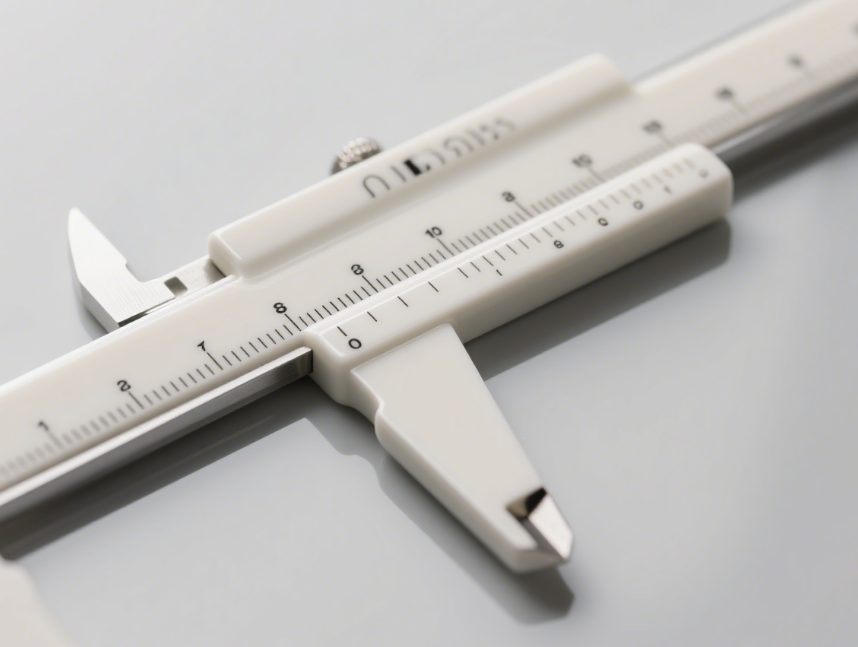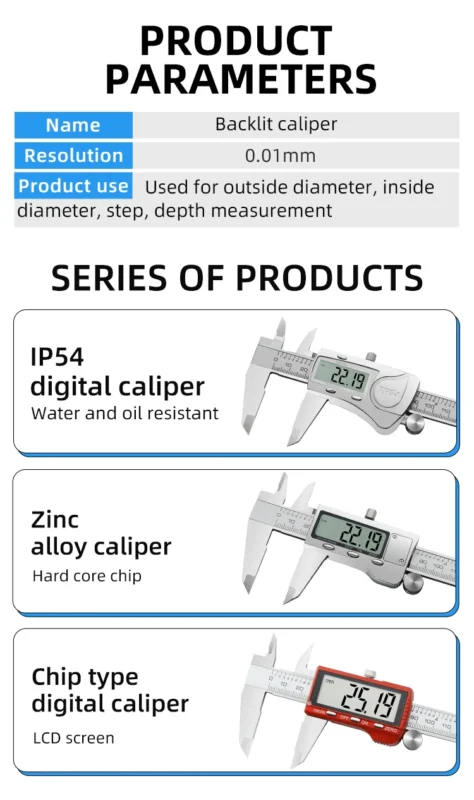Calipers: The Ultimate Guide to Precision Measurement Tools

Master Accuracy, Selection, and Best Practices for Industrial and DIY Applications
1. Why Calipers Are Non-Negotiable in Precision Work
Calipers are fundamental dimensional measurement tools used across machining, engineering, and manufacturing. Unlike rulers or tape measures, they deliver accuracy within ±0.02mm (±0.001″), making them indispensable for quality control, prototyping, and CNC operations. Their versatility spans four core functions:
- External measurements (e.g., shaft diameters)
- Internal measurements (e.g., hole dimensions)
- Depth gauging (e.g., recessed slots)
- Step measurements (e.g., tiered surfaces) 15.
In CNC machining, calipers verify part conformity to ±0.01mm tolerances—critical for aerospace components or medical implants where deviations cause systemic failures
1.
2. Types of Calipers: Matching Design to Application
A. Digital Calipers
- Accuracy: ±0.02mm with instant LCD readouts
- Key Features: Unit conversion (inch/mm/fraction), data output ports, auto-off
- Best For: High-speed CNC shops, environments requiring rapid measurements 23.
Example: The Kynup Digital Caliper (IP54 splash-proof) offers 0–150mm range, stainless steel construction, and fraction conversions for woodworking/metalworking 3.
B. Vernier Calipers
- Accuracy: ±0.02mm via manual scale alignment
- Key Features: No batteries, durable in oily/dirty conditions
- Best For: Educational settings, workshops needing EMI/RF interference-free tools 59.
C. Dial Calipers
- Accuracy: ±0.02mm with analog needle display
- Key Features: Tactile feedback, resistance to coolant spills
- Best For: Production floors requiring quick visual checks 18.
D. Micrometer Calipers
- Accuracy: ±0.001mm for ultra-fine measurements
- Key Features: Anvil/spindle design for thickness/diameter checks
- Best For: Calibration labs, precision toolmaking 5.
Table: Caliper Type Comparison
| Type | Accuracy | Readout Speed | Durability | Ideal Use Case |
|---|---|---|---|---|
| Digital | ±0.02mm | Instant | Moderate | CNC shops, prototyping |
| Vernier | ±0.02mm | Slow (skill-based) | High | Educational, harsh environments |
| Dial | ±0.02mm | Moderate | High | Production floors |
| Micrometer | ±0.001mm | Slow | Moderate | Calibration, metrology |
3. Mastering Measurement Techniques: 5 Pro Tips
- 1.Calibrate Religiously:
- Close jaws fully and zero digital/dial models. For verniers, align main/vernier scales at zero 67.
- Validate monthly against gauge blocks in ISO-certified labs 10.
- 2.External Dimensions:
- •Place object between outer jaws using light pressure (excessive force causes 0.05mm+ error) 69.
- 3.Internal Dimensions:
- Use inner jaws for holes—ensure parallel alignment to walls. Pro tip: For <10mm holes, use tapered jaw tips 89.
- 4.Depth Gauging:
- Extend the depth rod flush to the surface; lower until it contacts the base 6.
- 5.Avoid Thermal Errors:
- Handle with gloves: Body heat expands metal jaws by 0.01mm/°C. Measure at 20°C (68°F) where possible 10.
4. Caliper Selection: 4 Critical Factors
- 1.Accuracy Needs:
- General workshop: Digital/dial (±0.02mm)
- Micron-level work: Micrometers (±0.001mm) 5.
- 2.Environment:
- Coolant-heavy CNC zones: IP54-rated digitals (e.g., Mitutoyo AOS) or verniers 13.
- 3.Material Compatibility:
- Stainless steel jaws resist wear in metalworking; carbon fiber suits lightweight DIY tasks 210.
- 4.Ergonomics:
- Thumb rollers > slider locks for one-handed use. Example: Mitutoyo 500-196-30’s thumbwheel enables swift adjustments 3.
5. Maintenance: Extending Tool Life
- •Daily: Wipe jaws with acetone; check for burrs 16.
- •Weekly: Lubricate rails with light machine oil (e.g., ISO VG 10) 5.
- •Storage: Keep in protective cases at 40–60% humidity to prevent corrosion 10.
- •Calibration Cycle:
- •Production environments: Bi-weekly
- •Occasional use: Quarterly 710.
Red Flags Requiring Replacement:
- •Jaws don’t zero after adjustment
- •Visible scratches affecting measurements
- •Digital models show erratic readings 7
6. Industry Applications: Where Precision Matters
- Aerospace: Measuring turbine blade thickness (±0.025mm tolerance) with Mitutoyo digitals 3.
- Medical: Verifying bone screw threads at 0.01mm accuracy 1.
- Automotive: Checking piston ring grooves via depth rod measurements 8.
- 3D Printing: Validating dimensional accuracy of prototypes 2.
7. Future Trends: Smart Calipers & Sustainability
- IoT Integration: Bluetooth-enabled calipers (e.g., Mitutoyo) auto-log data to QC software, reducing human error 3.
- Eco-Materials: Recycled stainless steel and biodegradable cases (e.g., Beslands’ carbon fiber models) 2.
- AI-Assisted Calibration: Self-diagnosing tools predicting calibration drift via embedded sensors 10.
Key Takeaways for Your Readers:
- 1.Match caliper type to task: Digitals for speed, verniers for durability, micrometers for extreme precision.
- 2.Calibrate before every critical measurement—thermal drift causes silent errors.
- 3.Upgrade to IP54+ models if working with coolants or dust.
- 4.Adopt a “zero-tolerance” maintenance routine to preserve ±0.02mm accuracy.
Why Publish This?
This guide targets high-intent keywords like “CNC caliper accuracy” or “digital vs vernier caliper,” positioning your blog as a manufacturing authority. Backed by aerospace and automotive use cases, it appeals to professionals seeking actionable data—ideal for driving organic traffic and conversions.





